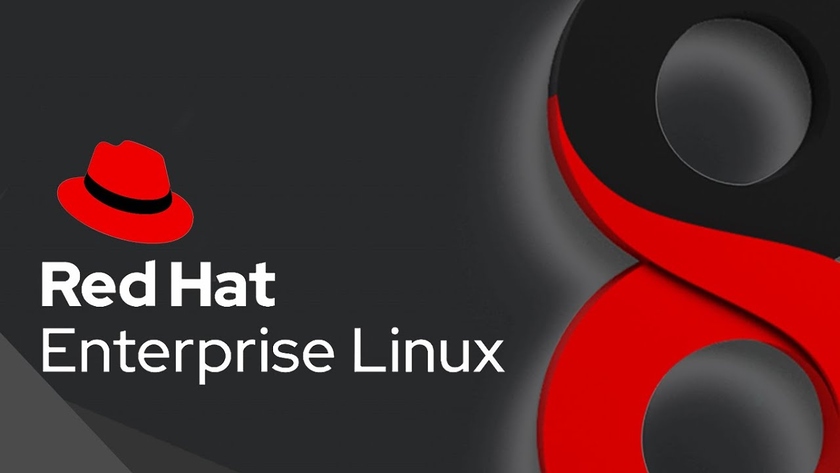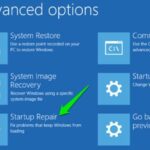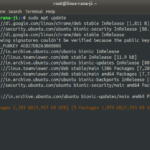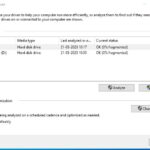What is Red Hat Enterprise?

Red Hat Enterprise is an open source software solution developed by the company Red Hat, Inc. It is a comprehensive platform providing support for a variety of operating systems, middleware, and cloud technologies. Red Hat Enterprise allows organizations to build and deploy scalable, secure, and reliable applications. It provides access to a variety of open source software packages that can be used to build, deploy, manage, and monitor applications on a variety of operating systems, cloud environments, and hardware architectures. Red Hat Enterprise also provides an integrated development environment that enables developers to create and test applications quickly and efficiently. Furthermore, it provides support for various virtualization technologies, allowing organizations to cost-effectively manage and deploy their applications.
What Does It Offer?
RedHat Enterprise Linux (RHEL) is a Linux-based operating system developed and produced by Red Hat. It is an enterprise-level platform designed for scalability and reliability, and is used widely in enterprise-level environments. RHEL offers severable features including a secure, open source platform, a wide range of applications, flexibility for integration and deployment, and a central repository of software updates. Additionally, RHEL is backed by the Red Hat support team, providing customers with the assurance of trustworthy and timely support. RHEL is the most popular enterprise Linux distribution and is used in many large companies and government organizations. As an enterprise-level platform, RHEL provides an ideal platform for running mission-critical applications, as well as for running cloud.
Benefits of Using Red Hat Enterprise
Red Hat Enterprise is a powerful, enterprise-level Linux-based operating system that provides many advantages for individuals and businesses. Red Hat Enterprise has been optimized for reliability, scalability, performance, and security, making it an ideal choice for organizations of all sizes. Red Hat Enterprise also offers a robust set of features, including integrated system management and automation tools, application development and deployment capabilities, and improved storage and networking support. Additionally, Red Hat Enterprise’s subscription-based pricing model makes it a cost-effective solution for companies seeking to maximize their IT investments. By utilizing Red Hat Enterprise, organizations can benefit from its versatile suite of features and services, which helps them to streamline their operations, reduce costs, and improve their overall efficiency.
Automation
Red Hat Enterprise Linux is an open source Linux-based operating system platform which provides a comprehensive set of integrated services and solutions for software development, deployment, and management. Automation of using Red Hat Enterprise involves the use of scripting and automation tools to manage, configure, deploy, and monitor multiple components of Red Hat Enterprise. This automated process helps to reduce manual effort, improve system stability, and ensure that applications are running optimally. Automation of Red Hat Enterprise can be done using various tools and languages such as Ansible, Puppet, Chef, and Python. Ansible is an open source automation platform preferred by many due to its simple yet powerful automation language. It also provides a powerful framework for managing multiple components of Red Hat Enterprise.
Cloud
The utilization of Red Hat Enterprise Cloud (RHEC) has become increasingly prevalent in recent years, particularly in corporate settings. RHEC is a cloud computing platform that is created and maintained by Red Hat, Inc., the leading provider of open source solutions. This platform provides customers with the ability to manage a virtualized infrastructure, store and manage data, and deploy applications across multiple cloud environments. By leveraging RHEC, organizations can gain access to a range of features and services that are designed to optimize the efficiency of their IT operations. Specifically, RHEC allows for scalability and control, allowing for the rapid deployment of applications in cloud-based environments. Additionally, its flexible pricing model enables customers to select the most cost-effective service options for their needs.
Containers
Containers are an increasingly popular means of package management and deployment in the modern computing environment. Red Hat Enterprise is a leading commercial implementation of the Linux operating system, and as such has become a popular platform for containerised applications. Containers are a type of software package that enable applications and their dependencies to be isolated from the underlying operating system, and thus enable applications to be easily moved between different environments. Red Hat Enterprise provides an enterprise-grade platform for running containerised applications, with a comprehensive set of tools and services to enable container deployment, monitoring, and management. Furthermore, Red Hat Enterprise provides a secure platform, with a number of security features, such as SELinux, to ensure that applications running in containers are isolated from each other.
Middleware
Red Hat Enterprise is a Linux-based operating system designed for enterprise-level computing and distributed computing. As such, it has a wide range of applications, from large-scale enterprise systems to small-scale, distributed computing networks. One of the most powerful features of Red Hat Enterprise is its use of middleware. Middleware is a layer of software that provides services for applications and systems, allowing them to communicate and interact with each other. By using middleware, organizations can create applications that are flexible and powerful, while still being able to manage the complexities of distributed computing. Red Hat Enterprise provides a wide range of middleware tools, including messaging, event-driven programming, distributed transaction management, distributed computing, and distributed file systems.
Storage
The utilization of Red Hat Enterprise storage solutions is an important factor in the successful operations of any organization. By leveraging Red Hat’s advanced technologies, organizations can ensure that their data is securely stored, reliably accessible, and easily recoverable. With Red Hat’s extensive portfolio of storage solutions, organizations can customize their storage environment to meet the needs of their individual application and workload requirements. These solutions range from high-performance, low-latency storage solutions for mission-critical applications to cost-effective, cloud-native solutions for the most basic of storage needs. Furthermore, the ability to utilize Red Hat’s expansive ecosystem of partners to design and implement a customized storage solution for an organization allows for a comprehensive approach to managing their data.
Application Development

Red Hat Enterprise Application Development is a comprehensive set of tools and technologies that enable enterprises to create, deploy, and manage applications. This set of tools and technologies provide organizations with the ability to create and deploy applications quickly and efficiently. Red Hat Enterprise Application Development consists of two main components: the Red Hat Enterprise Application Server (RHELAS) and the Red Hat Application Development Kit (RADK). The RHELAS is an integrated application platform that provides a secure runtime environment for applications. This platform offers a wide range of features, such as application scalability, performance monitoring and tuning, and integration with existing systems. The RADK is a development environment that allows developers to create, test, and deploy applications quickly and easily.
Microservices
Red Hat Enterprise is known for its pioneering use of microservices. A microservice is a small, independent application that is designed to perform a specific task. These services are organized into a larger, distributed system that can be used to build complex applications and systems. Microservices are characterized by their small size, modularity, and scalability. They are typically lightweight, self-contained, and loosely coupled, making them ideal for deployment in a cloud-native environment. Red Hat Enterprise utilizes microservices to provide a more flexible, cost-effective, and agile way to build applications and systems. Microservices also allow for greater scalability and resilience, as well as more frequent updates and releases.
Virtualization
Virtualization, in the context of Red Hat Enterprise, is a process of abstracting physical computing resources, such as hardware and operating systems, into virtual representations of those resources. By virtualizing physical resources, virtualization technology provides an efficient way to create new instances of those resources on-demand, making it possible to maximize the use of physical resources while minimizing the associated costs. This process is accomplished through the use of virtualization software, which works in concert with the hardware and operating system of the host computer to create virtual versions of physical resources. The virtualized resources can then be used as if they were the physical resources, allowing for greater scalability, flexibility, and resilience. Virtualization also provides increased availability of resources, as well as enhanced security.
Management
Red Hat Enterprise is a Linux-based operating system designed specifically for server and enterprise use. It incorporates many of the features of the open-source Linux community, such as a stable, secure, and reliable environment, along with the ability to customize and extend its functionality. Management of Red Hat Enterprise requires careful consideration of the system’s architecture, including the hardware and software components, as well as the security and user access policies. In addition, the system must be configured with the appropriate software and services, including the installation and maintenance of the necessary applications and services. Properly managing Red Hat Enterprise requires an understanding of the underlying principles and concepts of Linux, including processes, users, groups, permissions, and security.
Summing up
In conclusion, Red Hat Enterprise is an invaluable tool for businesses and organizations of all sizes and industries. It is a powerful platform that provides users with the ability to manage their IT infrastructure in a secure and reliable manner. Red Hat Enterprise offers a comprehensive suite of services and solutions, such as virtualization, cloud computing, directory services, storage, and system management. Additionally, Red Hat Enterprise provides users with access to a wide range of support services, training, and certification programs, ensuring that users get the most out of their investment. Red Hat Enterprise is a robust and secure platform, making it an ideal choice for businesses and organizations of any size.






